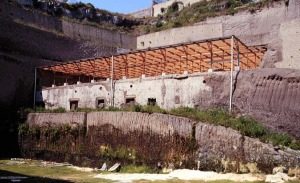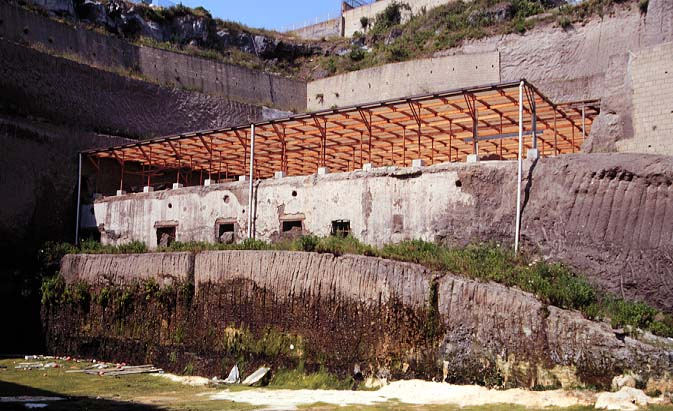
It was about two thousand years ago when the eruption of southern Italy’s Mount Vesuvius enveloped the ancient Roman cities of Pompei and Herculaneum in a fiery cataclysm, swathing them in a hot ash and mud cocoon that would actually end up ‘freezing’ their remains in what for history has been two of the best-preserved ancient urban centers. It became a gold mine for archaeological investigation in the late 19th century, and continues to reveal more to archaeologists today. In Herculaneum, one of the most significant finds was a library of 1,800 carbonized papyri found within the remains of a Roman villa, known today as the Villa of the Papyri. Because of the scrolls’ charred state and fragility, however, they have been extremely difficut to decipher.
Until now.
Recent analysis of the papyrus scroll fragments using advanced techniques have revealed a number of findings, including the revelation that the ancient Romans used metallic ink in their literary inscriptions centuries earlier than previously thought.* Up to now, it was thought that ancient texts, particularly Greek and Latin literary manuscripts produced until the fourth century AD, were written primarily in carbon-based ink on papyri, the fibrous structure of which allowed the ancient scribes to forego the use of ruling lines. Now, Vito Mocella and colleagues have applied nondestructive synchrotron (particle accelerator) X-ray-based methods to chemically analyze hardly visible inscriptions on two nearly flat, multilayered charred papyrus fragments that were found at the Villa. While it was thought that the introduction of metal in writing materials was generally dated to the fourth-fifth century AD, the fragments of these scrolls showed high lead concentrations—around 84 µg/cm2 and 16 µg/cm2—suggesting a purposeful use of lead-containing ink, several centuries before the use of metallic ink was introduced into literary inscription in the Greco-Roman period. Spots of concentrated lead were detected at the beginnings and ends of the scribes’ pen strokes on the scrolls.
________________________________________
The remains of the Villa of the Papyri in Herculaneum. Erik Anderson, Wikimedia Commons
____________________________________________________
Now, Vito Mocella, who is an expert in condensed matter physics and electromagnetism, and Papyrologist Daniel Delattre, have joined forces to make the scrolls legible again. Using their expertise and the help of the synchrotron particle accelerator, they are slowly on their way to more easily deciphering the scrolls once and for all, using the noninvasive technique (see the video below). The ultimate results may shed much light on Greco-Roman society in the shadow of Vesuvius.
__________________________________________
Would Say Would Fall from MEL Films on Vimeo.
__________________________________________
* “Revealing metallic ink in Herculaneum papyri,” by Emmanuel Brun et al.
________________________________________________________

______________________________________________
Travel and learn with Far Horizons.
____________________________________________
This richly illustrated issue includes the following stories: Recent findings shedding new light on the whereabouts of the remains of Philip of Macedon, father of Alexander the Great; how an archaeologist-sculptor is bringing bones of the dead back to life; archaeologists uncovering town life at the dawn of civilization; an exclusive interview with internationally acclaimed archaeologist James M. Adovasio about what makes the Meadowcroft Rockshelter prominent in the ongoing search for the first Americans; what archaeologists are finding at the site of the ancient city of Gath, the home town of the biblical Philistine giant, Goliath; and how scientists are redrawing the picture of human evolution in Europe. Find it on Amazon.com.









